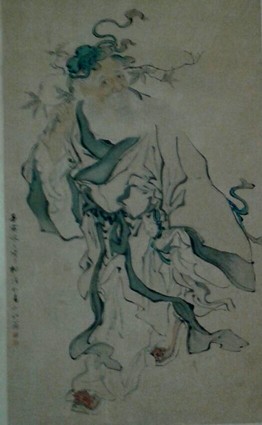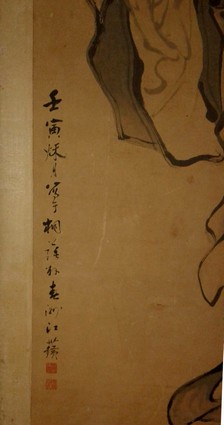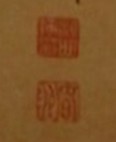

Cina: da un posto qualsiasi..
Chinese calligraphy is a writing technique which creates beautiful art with its ink brush strokes.
The word comes from Greek and means 'person who writes beautifully', and is considered a form of
artistic expression around the globe because of its feeling of movement on the page.
Chinese writing dates to hundreds of years BCE, when Chinese ideograms were skillfully carved into animal bones,
cloth, wood, metal or were marked in mold.
With the Han Dynasty came the invention of paper (made from different plants depending on location) and wider
ink distribution, which meant that more people started writing.
With this started the distinction between calligraphy and normal characters.
Calligraphy became a full-on artistic expression and was taught alongside traditional painting, and it still is now.
It is truly an art:
Behind the flawless balance of the finished piece are hours
of practice where the artist becomes familiar with the brush and develops their preferences
in size and amount of ink and/or water.
My teacher often told me that I didn't have to copy exactly what the characters were on the book we followed,
but instead be inspired by it and let my own style shine through.
On the more technical side:
Other commonly-used tools in Chinese calligraphy are desk pads or paper weighs to make the process easier.
There are five different types of calligraphy script.
Education.asianart.org classifies them as 3 formal scripts:
There are also 2 informal ones- Semicursive Script, equivalent to Western longhand and Cursive Script which is
the most abbreviated and spontaneous.
There have been many artists throughout the course of history who have excelled at this art.
For example, a man called Zhang Zuyi who lived from 1849-1917 is remembered as one of the best calligraphers.
Anhui Province native, he was inspired by masters such as Shigu and Zhongding and wrote in Seal and Clerical
Script in the style of the Han Dynasty.
He also loved bronze and stone-tablet inscriptions.
In Chinese daily life, calligraphy is taught in schools and is found on red (LINK TO SUPERSTITCIONS ARTICLE) strips
of paper which are then hung on doors during the Chinese New Year.
Just about each household has at least one calligraphy set, and before the New Year they'll take it
and write good-luck wishes on them and will keep them on their doors for months.
Often times walking through the
streets and seeing house doors feels like going through a great, personalized art gallery!
The two sayings on the pictures above are 'Gong Xi Fa Cai' wishing others richness and 'Wan Shi Ru Yi', which is
a message of good fortune.
Of course, there are so many more, including the 'fu' sign which is put upside down to call
for luck on the household.
Needless to say, calligraphy is woven into Chinese traditions and the life of today,
and is an incredible skill worth exploring.
when I started learning calligraphy, my teacher largely emphasized the rhythm of the brush as if
it were a dance.
There are 'Four Treasures of the Study' in calligraphy, which are comprised of the brush,
ink, paper, and inkstone (a prized artistic object where the inkstick is grinded into liquid and is put while writing).
Seal Script, developed from China's most ancient forms of writing;
Clerical Script, an archaic one and Standard Script, which can be compared to Western printing;


Whether you want to learn it or simply admire it, I highly recommend searching on calligraphy-related websites
and videos to know more about this unique Chinese art.

Cortesia di L.B.
